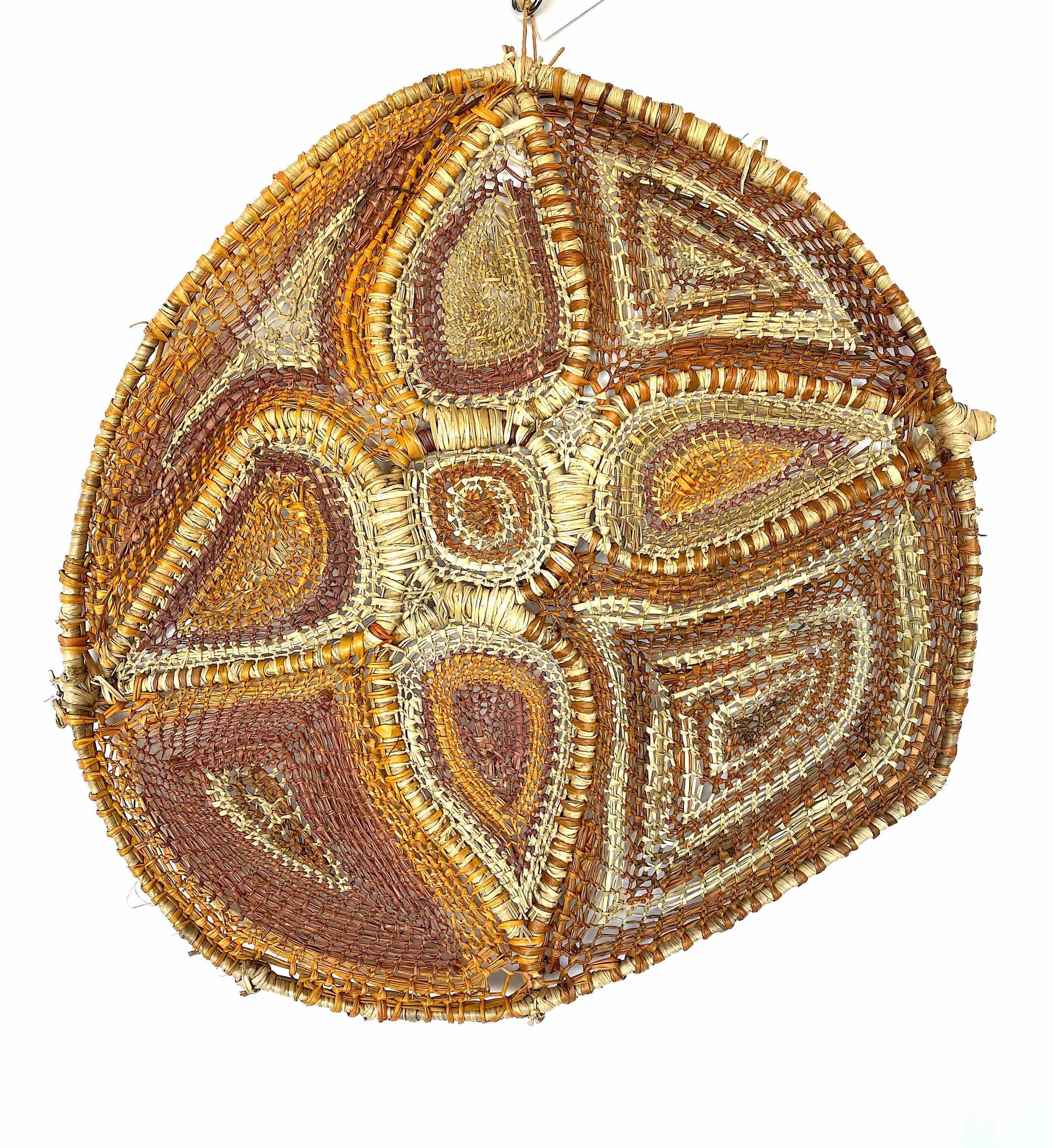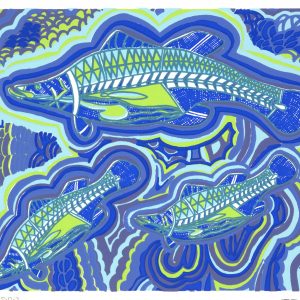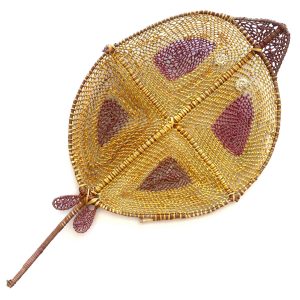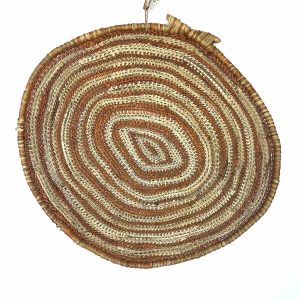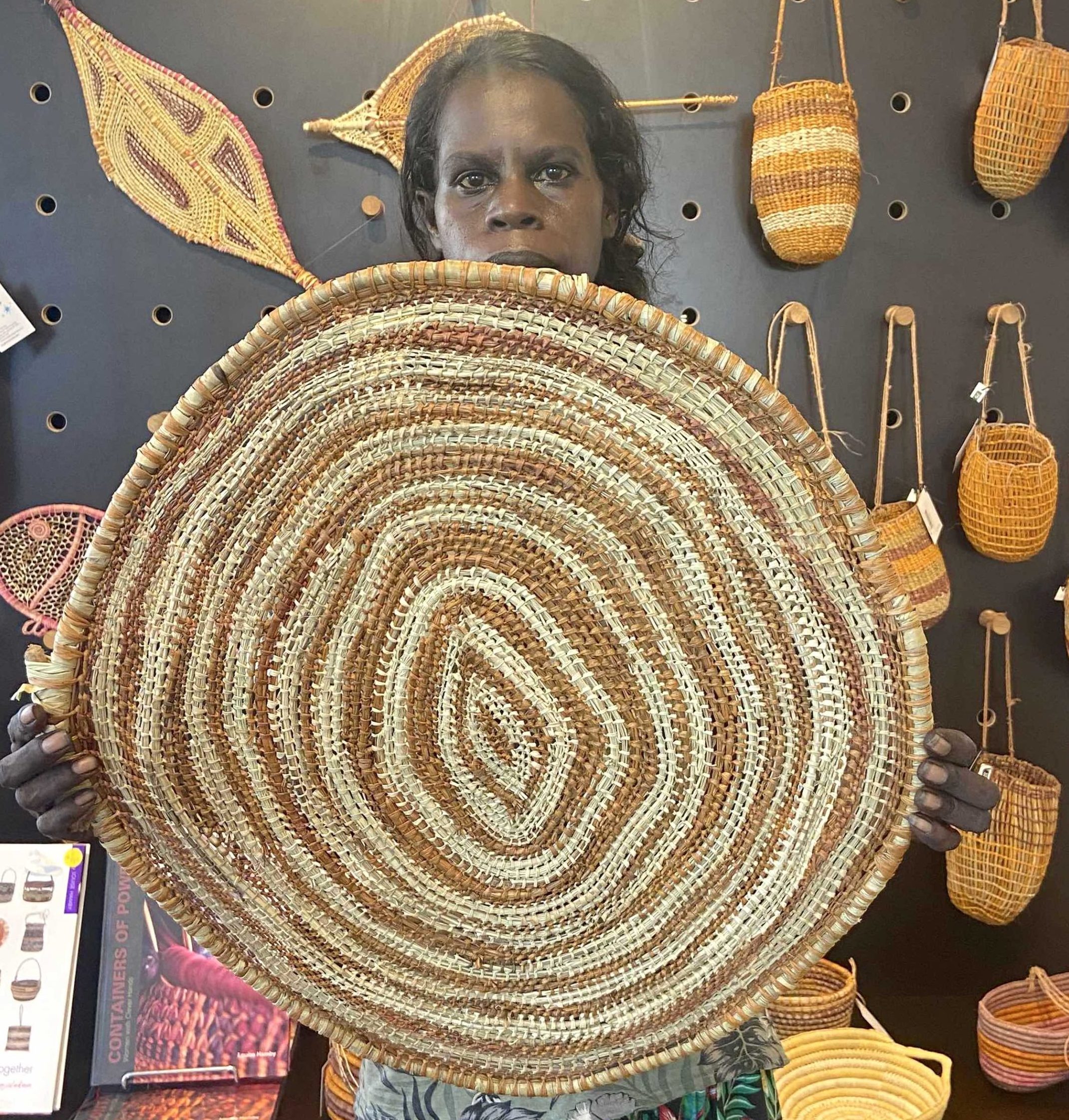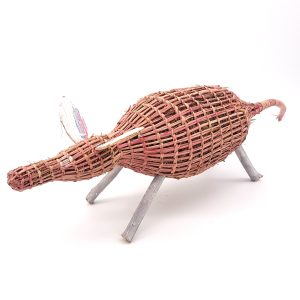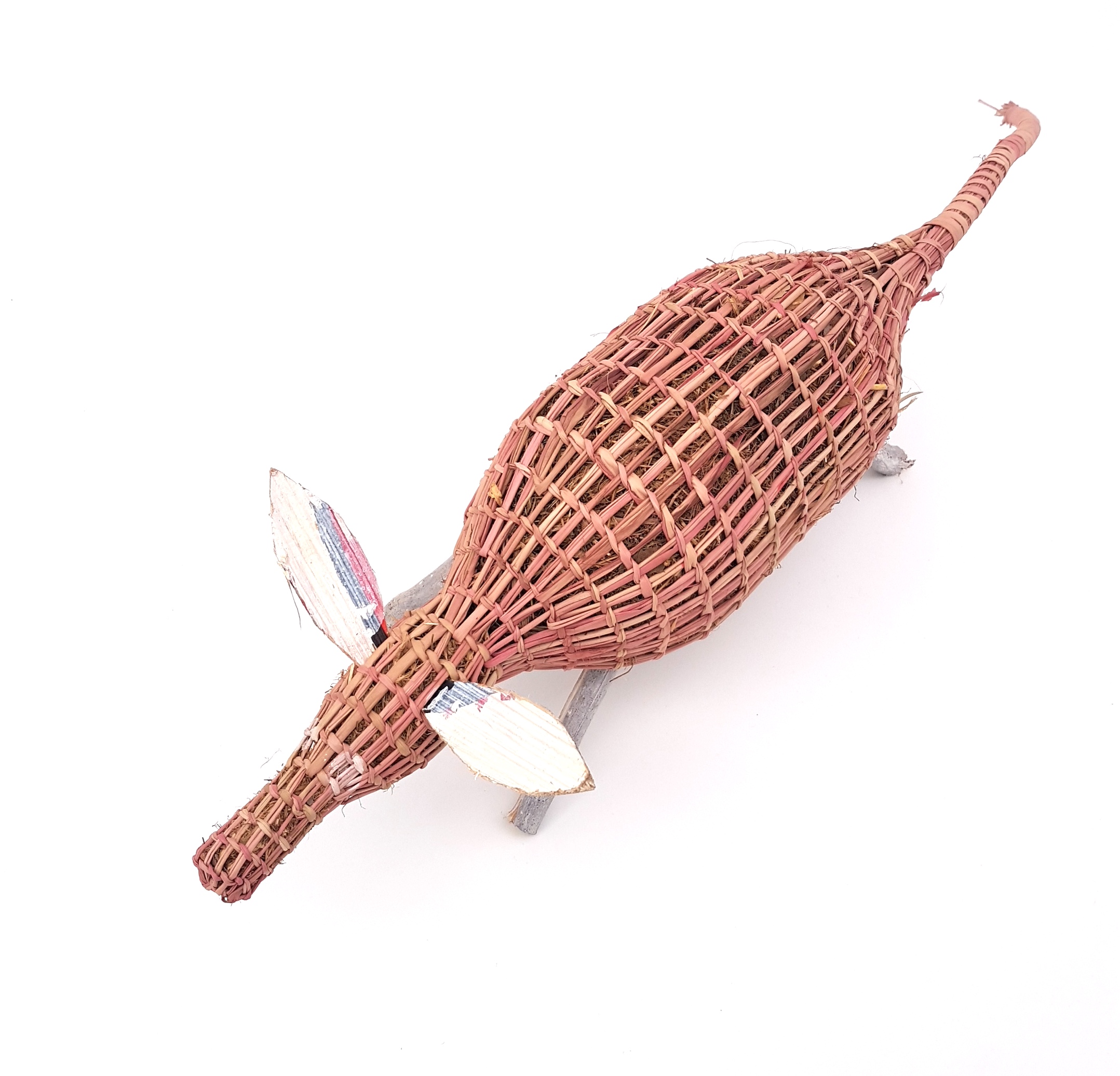Description
Rebecca is the classificatory daughter of Jimmy Njiminjuma (1945 -2004), an acclaimed artist vital to the founding of the contemporary Kuninjku painting movement in Central Arnhem Land.
In 2003, Kuninjku artist Marina Murdilnga brought a revolutionary new form of pandanus weaving to Maningrida Arts & Culture: a flat yawkyawk made from knotted pandanus on a jungle-vine frame, painted with natural pigments. She next explored using dyed pandanus and feathers in this way. Murdilnga’s innovation inspired many other weavers, who are producing an array of beautifully resolved flat figurative works (stingray, butterflies, spiderwebs) and spiritual figures and Ancestral beings.
Reference Maningrida Arts & Culture
About Pandanus weaving
Contemporary Arnhem Land weavers are renowned for their beautifully executed Pandanus weavings and use of local dyes to create a wide palette of colours. Only women collect and process Pandanus. People often ask about how weavings are priced and we explain the various laborious and time consuming processes involved in creating a weaving.
Collecting Pandanus
This is the first part of the process. Only the new growth (erect shoots emerging from the top of the tree) is used and the ladies use a ‘hook stick’ to harvest as they are usually high in the area. It requires strength, skill and knowledge of which trees/places yield the best source. Pandanus grows best in areas that experience seasonal dampness or are near watercourses. The ladies may have walk long distances to find the right grove and then carry their haul back. It is a collaborative process and children will often join them. Harvesting is easiest in the wet season when Pandanus trees everywhere produce new growth.
Stripping
There are a few steps to stripping Pandanus and it is surprisingly difficult to do. An experienced person makes it look easy! On either side of the leaf are thorns/barbs running in the opposite direction to the stripping action and these need to be avoided. A portion of the leaf is stripped from the top to the base to yield a long piece of moist fibre. Then the outer edges (with barbs) are removed and the remaining fibre is also retained. Each leaf yields two lengths of slightly different thickness and quality. These are then put aside to dry or be dyed.
Dyeing
This is almost always done over an open fire in large pots. Colours may be roots, berries, flowers or, in the case of green, a part of the Pandanus plant. Some of the dyes are seasonal and/or very location specific. Things may be added to the dye mix to strengthen and change colours, such as ash. The weavers take great care and pride in creating vivid colours and often will trade dyes and additives. The usual time to dye is immediately after the Pandanus has been stripped.
Weaving
A range of traditional, borrowed and innovated weaving techniques are used in contemporary Pandanus weavings. Larger sculptures are made with a jungle cane structure and infilled with lace like weaving. Smaller sculptures use Pandanus fibre for the framework as well.
Mats
Traditional mats are used for a variety of purposes ranging from the utilitarian to the ceremonial. They can be made flat or conical, small and large. In their flattened form, they can be used to sleep on or for women’s business, thus mats have a particular relationship to female experience and the cycles of life. As an upright cone (conical), mats are regularly used to shield sleeping babies from mosquitos and flies, and to cover sacred objects of ritual significance. They can also be used for blocking creeks to divert fish into fish traps and for wrapping and rinsing food in water.
The coil technique
Today’s coiled fibre works are the result of rich cultural exchange and artistic innovation. The coiling technique was traditionally used by southern Aboriginal people of the Murray River, and was introduced to Goulburn Island by missionary Greta Matthews in the 1920s. From here it spread amongst Aboriginal people throughout Arnhem Land. These works are living embodiments of Australia’s history. Kunwinjku women have been developing the artform for almost 100 years, experimenting with new forms and adapting it to local materials.
References Twined Together (Kunmadj Ngalehnjaleken)
In 2005 Injalak Arts published Twined Together (Kunmadj Ngalehnjaleken) in collaboration with academic and author Dr Louise Hamby (editor). This is now the definitive text; a unique reference on fibre works from Western Arnhem Land, Northern Territory.
“This book is a guide for those with artistic, anthropological, linguistic, historical and fibre interests, providing insight into the previously unexplored complexities of fibre art from the region. Photographic essays feature collection, preparation, making and special features such as handle variations. The women artists who make the bags, baskets and mats are Kunwinjku speakers.”
Lavishly illustrated with over 600 photographs
ISBN: 0 646 44608 8 / 0646446088

